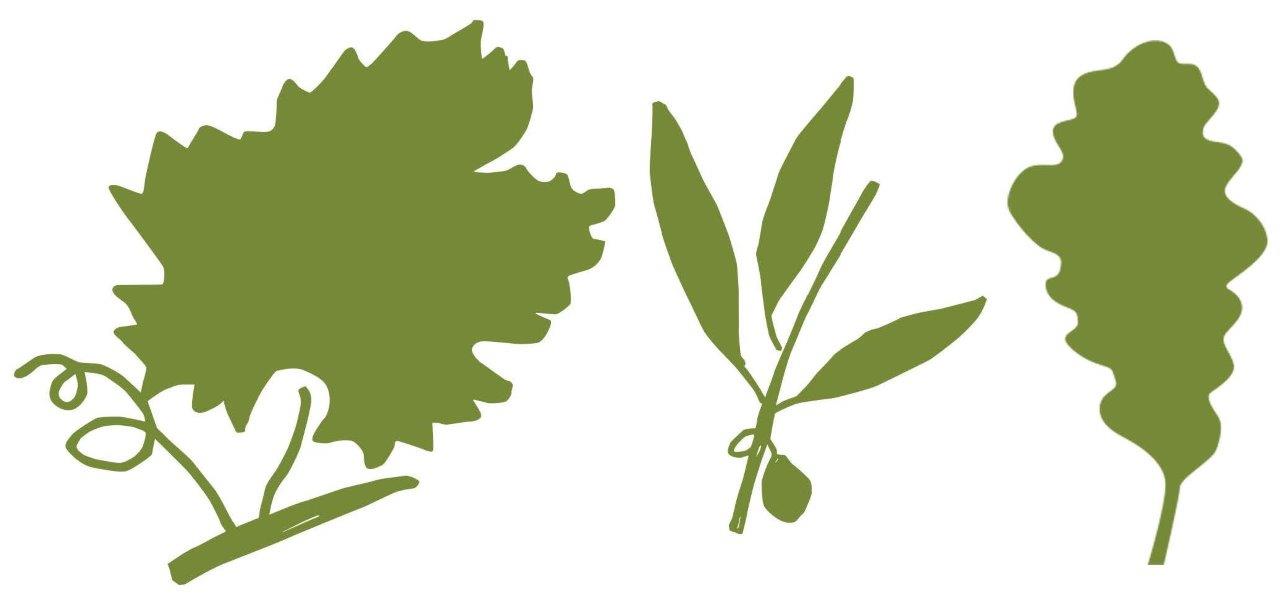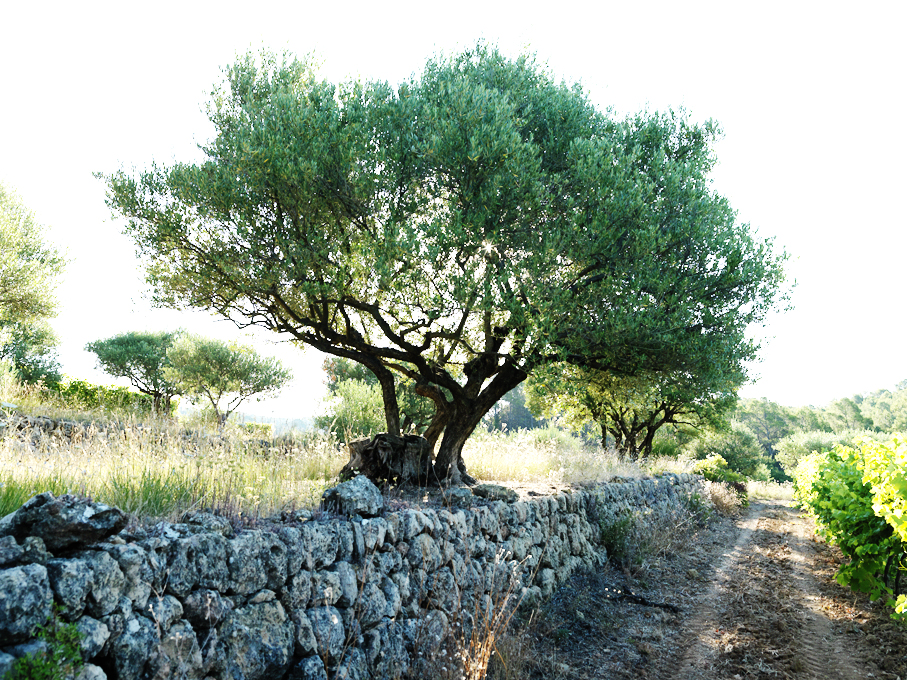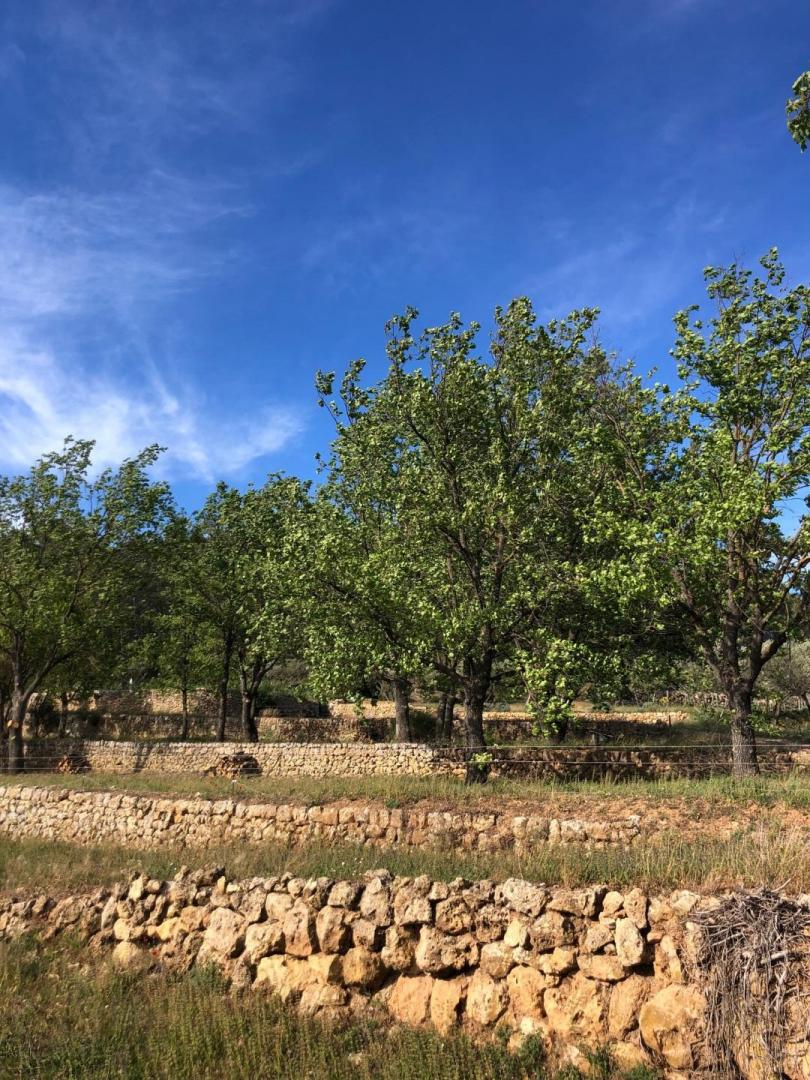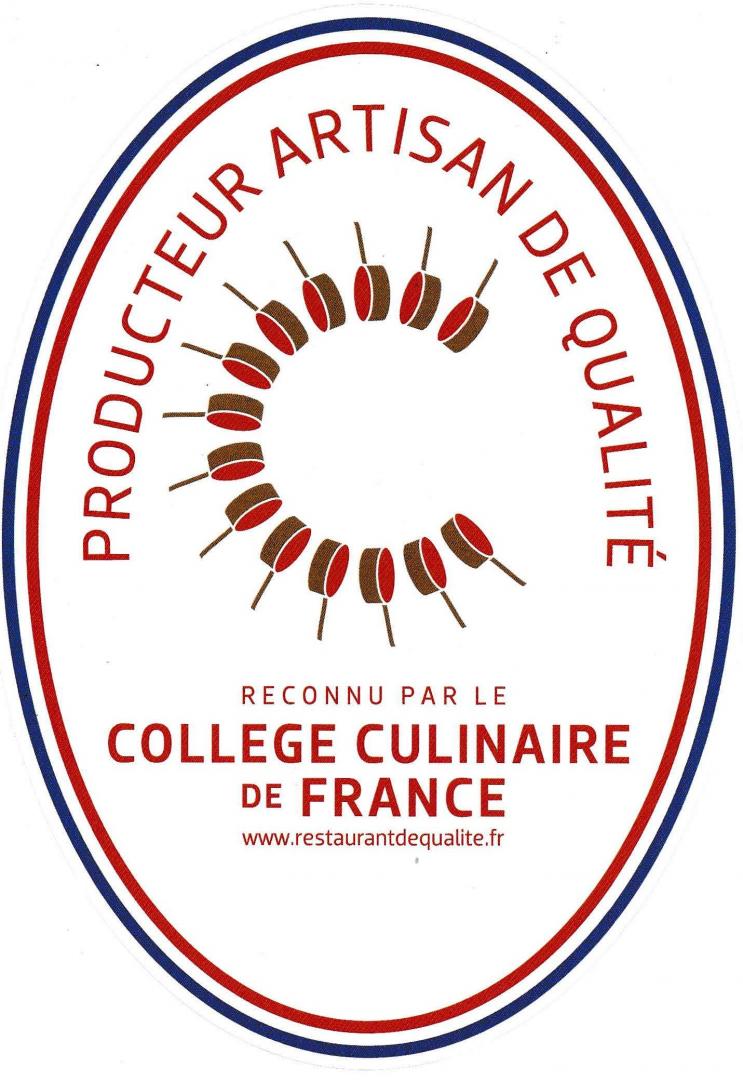Olive Oil and Truffes
The estate is symbolized by 3 leaves: the vine, the oak and the olive tree.

They perfectly illustrate the 3 Clos d'Alari products: Côtes de Provence appellation wines, fresh truffles and olive oil.
The Saint Antonin du Var site lends itself perfectly to these 3 crops.
Olive trees

"If it weren't for the olive tree, I'd be the 1st tree," says the Ash tree.
The olive is a very ancient tree, cultivated as far back as 3000 BC, i.e. 5000 years ago.
Found in Palestine and Syria, it gradually spread to Mediterranean countries. Olive oil was already being used a long time ago.
In the kitchen, in medicine, in domestic life: it was used for lighting (it was put in small terracotta or bronze lamps to burn); in religious life: holy oils (it was with olive oil that Clovis was anointed at his baptism, miraculous oil brought by St Rémy).
In France today, there are around 2.5 million cultivated olive trees and 140 oil mills, while there are 800 million olive trees worldwide.
We have very few trees left because in 1956 and again in 1985, very severe frosts killed many olive trees. However, many have been replanted.
These are mainly grown in southern France: Provence, the Alps and the Côte d'Azur.
"When you plow lightly around an olive tree, you beg it to produce; when you smoke it, you beg it to do so, when you prune it, you force it to do so" LATIN PROVERB.
An olive tree produces from 15 to 50 kilos; to make 1 litre of olive oil, you need at least 5 kilos of olives.
The olives
| April to June | Flowering: 5 out of 100 will produce an olive, a delicate fragrance. |
| June | The fruit sets, the stone hardens, and the pulp become fleshy. |
| Autumn | is when the olives turn from tender green to violet, then black in winter. |
| Winter | Harvesting from October to February |
At Saint Antonin du Var, we pick our olives in October/November, when they are green and turning purple, to obtain a fruity green oil.
Nets are placed around the tree. We drop the olives onto the net with our hands or a comb that rakes the high branches.
L'huile d'olive
In a single day, we pick 60 to 250 kilos of olives.
Once picked, the olives are crushed, put through a blower to remove soil and leaves, and taken to the mill, where they are pressed within 24 hours.
Principles of olive oil production
Olive leaf removal
Olive washing
Crushing the olives using a mechanical mill
Kneading of olive paste
Pressing the olive paste by cold extraction to obtain the olive juice
As the juice is composed of vegetable oil and water, vertical centrifugation separates them to obtain extra virgin olive oil.
Olive oil should be stored in a dark place for 1 year.
There are different grades of olive oil.
Extra virgin: maximum oleic acid content 1%.
Virgin or fine: maximum oleic acid content 2%.
Current grade: max. Oleic acid content 3.3%.
Oleic acid is an indicator of soil degradation during the harvesting and production. The lower the level, the better the oil has been produced.
However, some people prefer oil with higher acidity, which is considered tastier.
The estate's 400 olive trees produce 400 liters of olive oil in good years. The olive trees are scattered around the estate.
We have many ancient trees, planted on the edges of the vineyard terraces. The blend of different varieties: cayon, entrecastellaise, picholine, aglandau, gives a herbaceous oil, with aromas of cut hay and purple artichoke.
The trees are not irrigated, only pruned and fed with Bordeaux mixture. They are hand-picked from late November to late December. It takes about 5 to 6 kg to make 1L of extra-virgin oil. Our acidity is around 0.2 to 0.3%.
The olives are immediately taken to Gervasoni's mill in Aups, pressed within 24 hours. The mill has a continuous 3-phase extraction line. Our oil is then decanted and put into cans 2 to 3 months later.
The Domaine sells the year's oil, so the bottles are vintage-dated. It's pure fruit juice.
Le Domaine est adhérent de première heure au groupement des oléiculteurs varois.
Since 2021, our olive oils have been certified organic in the same way as our wines.
The truffle farm

The truffle farm has 160 trees and produces melanosporums, known as Périgord black truffles.
A little history
The nickname Black Diamond was given to this precious mushroom by our famous gastronome Brillat-Savarin in his essay on the physiology of taste in 1826.
Since the middle of the 20th century, truffles have regained their rightful place on our plates thanks to truffle-growing techniques. This luxury mushroom has had its ups and downs since the turn of the century. The kings of France used to delight in them, and until the end of the 19th century, truffles were on the menu of grand receptions and farmers' tables. This golden age of truffles saw production rise to 2,000 tonnes.
What is a truffle?
A truffle is the vernacular name given to the edible fruiting body of an ectomycorrhizal ascomycete fungus, which takes on a more or less spherical shape. The mushroom can produce several truffles.
The black truffle, Tuber melanosporum in Latin, is found only in limestone soils, at a depth of 1 to 15 cm, at the foot of truffle trees (oak, hazelnut, lime, hornbeam, etc.). The truffle develops in the spring and grows from mid-August onwards, reaching maturity several months later. It is then collected, or "cavée", usually with the help of a truffle dog or flies.
Truffle production depends on a delicate balance between the tree's root system and the mycelium of the fungus and between the fungus and the soil.
The truffle is a mushroom that bears fruit in the soil. From April to June, it is born in the shape of a cup, the edges gradually joining to form the tuber. Veins then form, and the truffle's body protects it, nourishes and helps it breathe. With the heat and rain of late summer, the truffle will grow and reach its optimum stage in September.
The word "truffle" refers to the place where truffles are produced. The site may include one or more truffle trees. A Tuber melanosporum truffle plantation can generally be identified by its "burnt" appearance.
One of the main discriminating factors is deep ground frost, which can interrupt ascocarp growth and ripen in the first 5 to 20 centimetres. Generally speaking, truffles need alternating periods of heat and humidity for fruit initiation to occur. Tuber melanosporum has more limited water requirements in June and July, while August thunderstorms are very beneficial: its growth can be exponential. However, a severe drought in May and June can doom trufflelets, most of which are born in April and May.
The truffle harvest takes place from mid-November to mid-March. The truffle grower is accompanied by his dog.
Truffles in cooking
Many books have been written on the subject. Cooking destroys taste and texture. At Clos d'Alari, we prefer to work with truffles as raw as possible, integrating the broken pieces into the cooking process and using their strong odour to flavour fatty products (such as eggs).
Suggested truffle recipes
Truffle carpaccio
In the morning for the evening.
Make individual plates.
Arrange beef or scallop carpaccio on top.
Cut thin slices of truffle, add olive oil and cover with cellophane paper.
Remove 1 hour before serving, season with fleur de sel and a twist of the pepper mill.
Potatoes with truffles
Pre-cook large mashed potatoes in water.
Cut them in half, scoop out the core and arrange slices of truffle in the potato. Close, wrap in aluminum foil and finish cooking in the oven.
Make a sauce with chicken stock, crème fraîche, a splash of port and grated truffle.
Brie with truffles
Buy a farmhouse brie. Open in half (thickness-wise), place slices of truffle on top and close. Leave at room temperature.
Wrap in cellophane, and prepare the day before for the next day.
Serve with a mesclun salad to which truffle seasoning (olive oil, truffle grater, balsamic vinegar) has been added.




